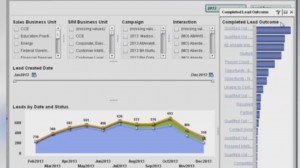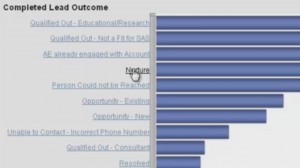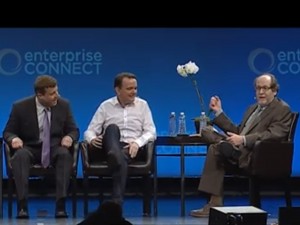It’s hard to overstate the important of context. It provides clues when you are looking for answers, it provides texture and nuance to a story you might be telling, and it provides meaning to what might otherwise be random facts by revealing the connections between them.
In the case of marketing, it has always been important to know the right context within which something occurs. And for marketers, few things are more interesting and contextually-dependent than attribution. For as long as people have been going to market, the ones offering the goods have always been interested in knowing how to sell more, and why people buy so they can continue doing what works so the buyers are happy.
 We all know that progress and technology have made marketing (and life in general) ever more complicated, making it more difficult at times to see and understand context.
We all know that progress and technology have made marketing (and life in general) ever more complicated, making it more difficult at times to see and understand context.
At the same time, analytics has also made it easier to see context in business environments, which takes you one step closer to understanding and using that knowledge to know what works and what doesn’t.
 Here at SAS, we’re able to use our customer intelligence solutions to improve our marketing in a number of important ways. We’re able to use data from our sales automation tools, contact center interactions, email systems and web analytics to inform our marketing strategies in ways that enable us to constantly monitor and improve.
Here at SAS, we’re able to use our customer intelligence solutions to improve our marketing in a number of important ways. We’re able to use data from our sales automation tools, contact center interactions, email systems and web analytics to inform our marketing strategies in ways that enable us to constantly monitor and improve.
For seeing context in our data, few things are more powerful than Visual Analytics.

Matt Fulk, Senior Manager of our Database Marketing group shared our experiences recently at Enterprise Connect, a business-to-business conference in Orlando, Florida.
Specifically as it pertains to context, Matt shared that his view that "80 to 90% of your work is to look across your enterprise, understand where all the data is coming from and where customers interact with you." Once you’ve been able to do that, you’re able to engage with your customers in ways that are relevant to them.
The other benefit, which is equally important, is how using Visual Analytics has helped us improve internally by enabling access to a wide range of data on one platform.
And with a visually engaging interface and user-friendly modules, the access to the data is available throughout the marketing department. I speak from personal experience that if someone as non-technical as me can use it, anyone can! And being able to conduct my own analyses directly with the data has been liberating and it’s changed the conversation with Matt and his team.
For Matt’s team, the transformation has been equally liberating. They’ve shifted from being bogged down with a lot of deadline-driven, ad-hoc programming to being able to consider insights and strategies together with their internal clients. It has enabled us all to see context in ways that improve how we go about our work as marketers, which inevitably will translate into improved experiences for our customers.
As a result, we’re able to shift our focus from the trees to the forest more easily when needed, and to make decisions on whichever view is more appropriate – or use insights from both views to drive better outcomes. And that's how for us, seeing context helps both internally and externally.
So how do you see context?
